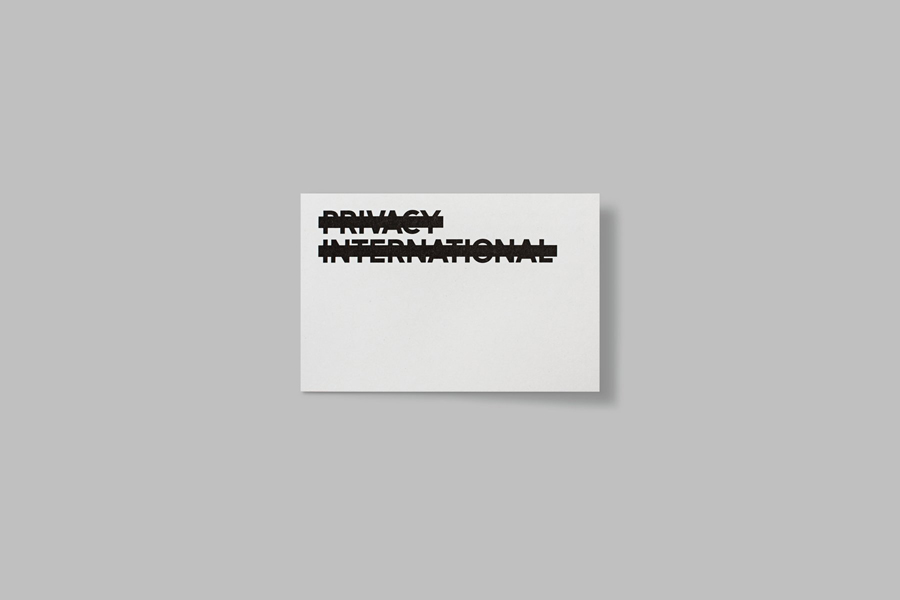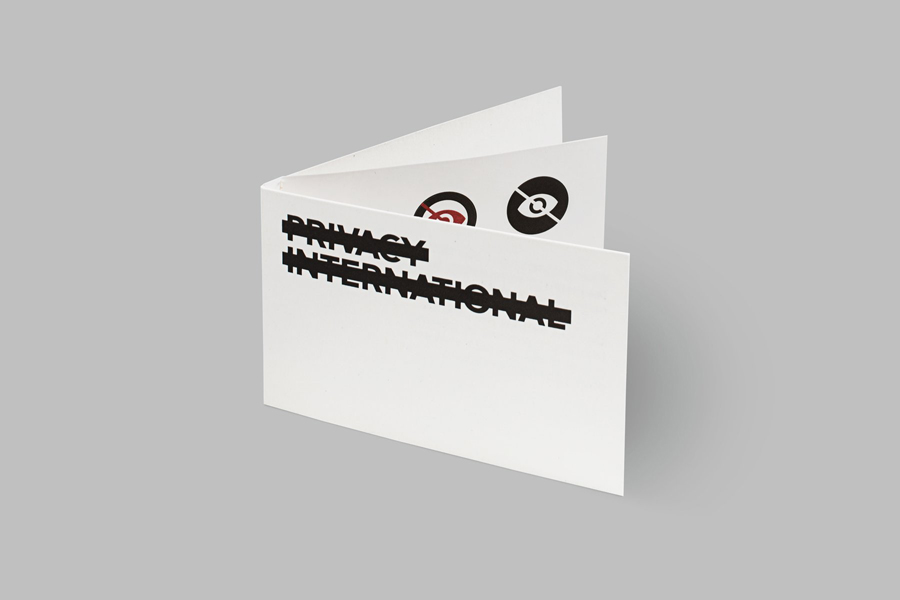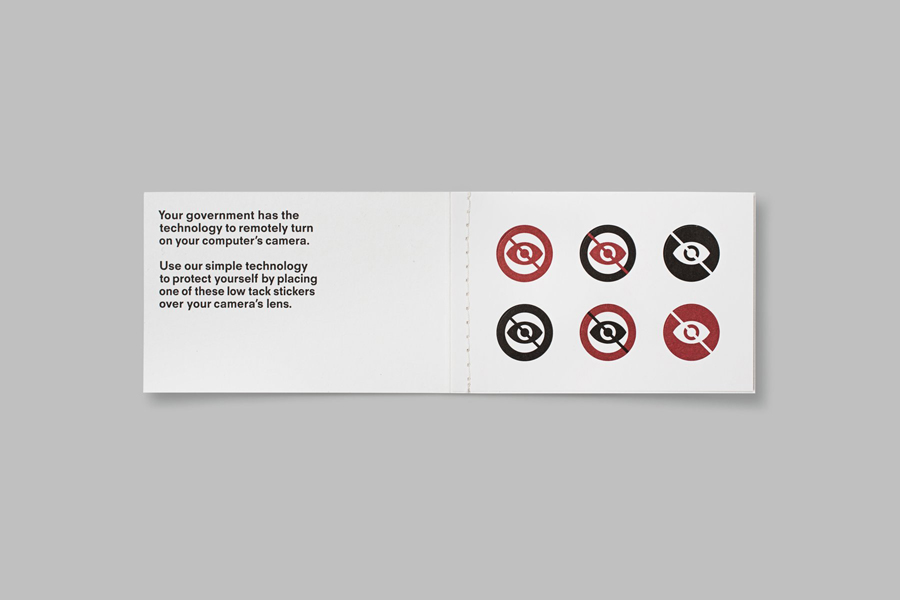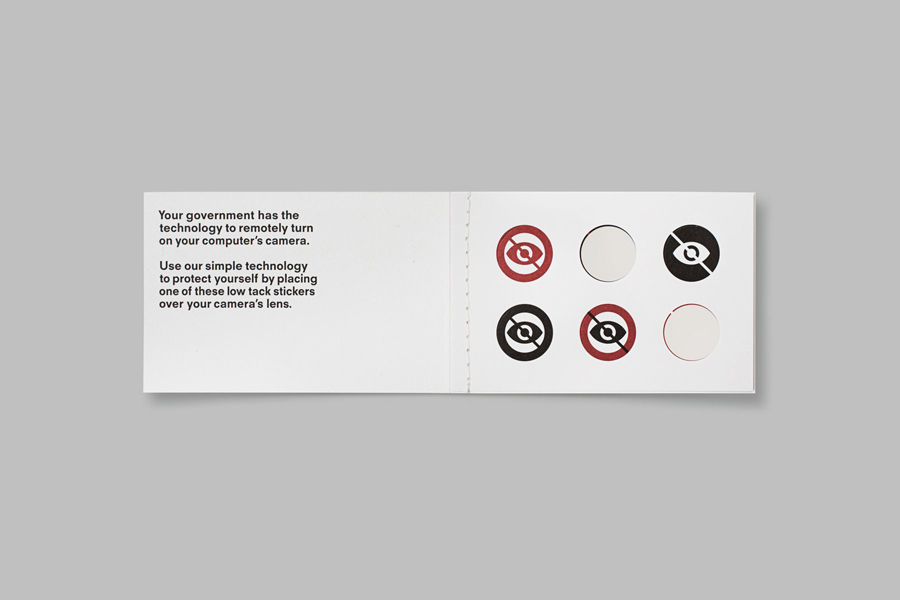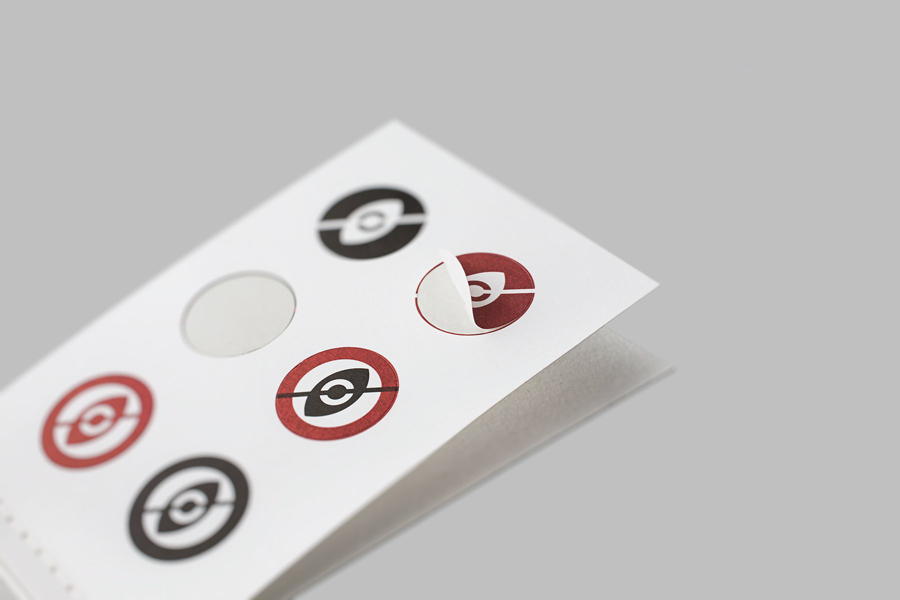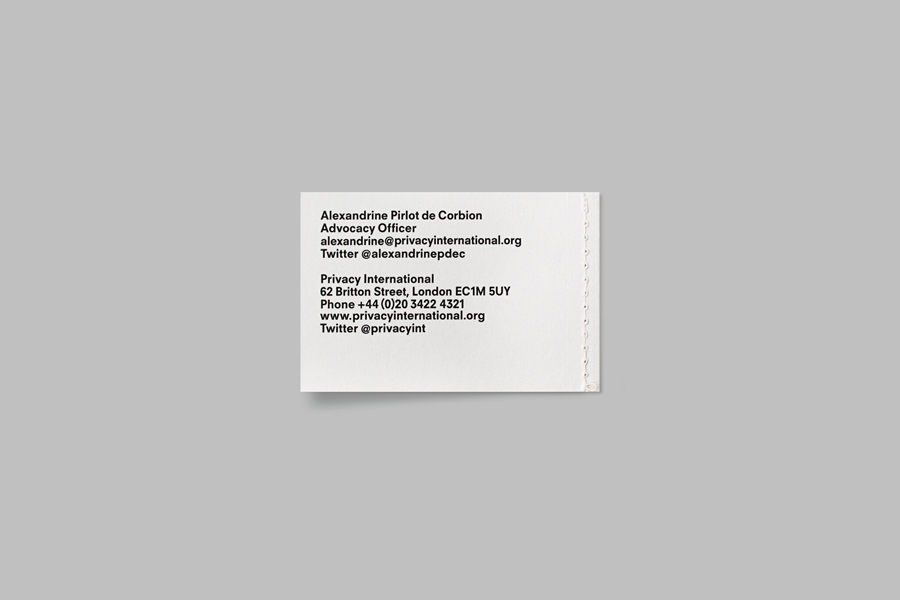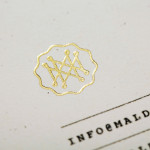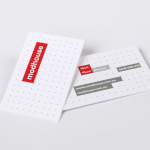Privacy International by Paul Belford Ltd.
Opinion by admin123 Posted 14 May 2012
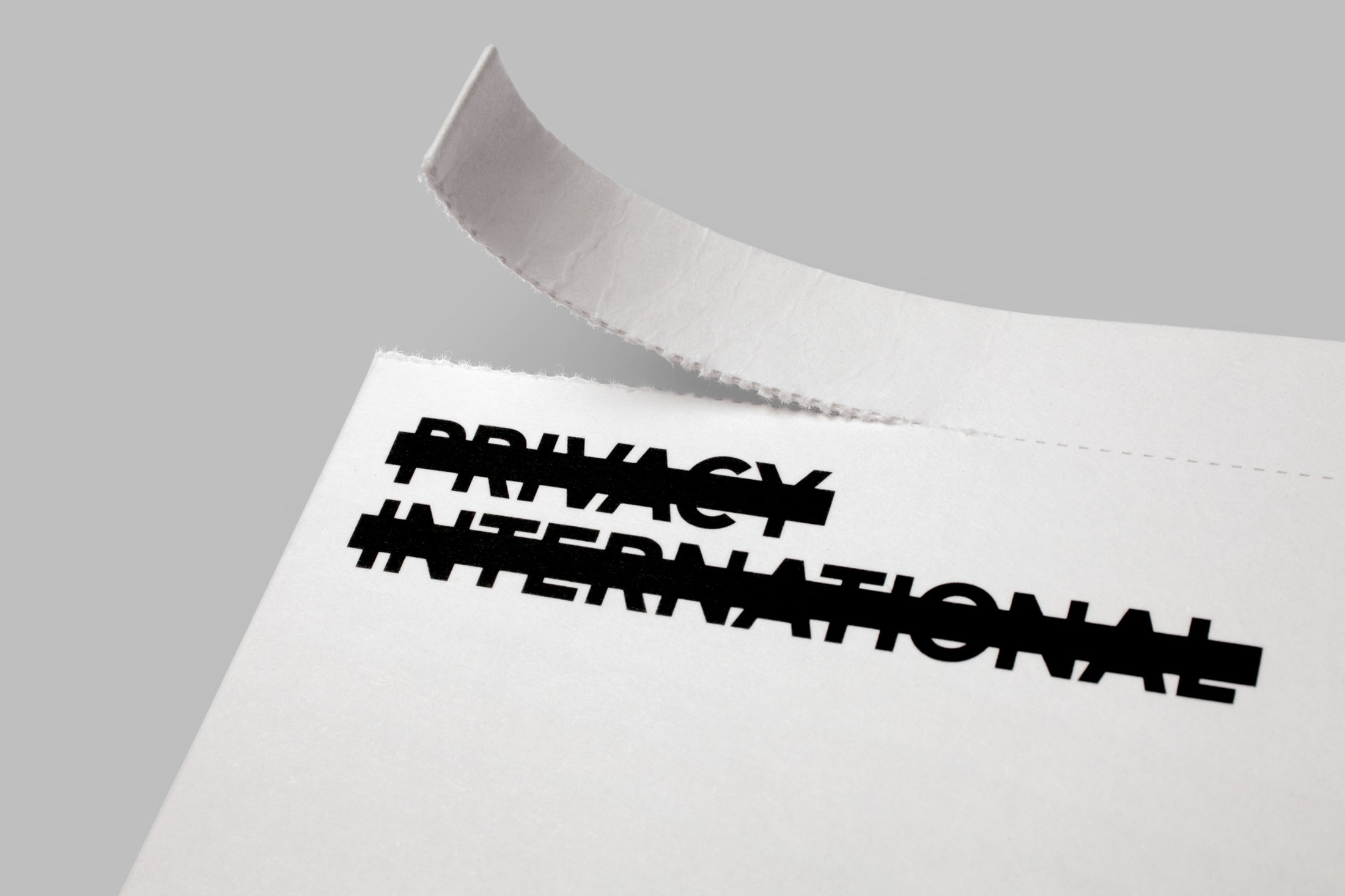
Privacy International is a UK based non-profit organisation established in 1990 to monitor the security intrusions of governments and business, increase the awareness of data protection concerns and establish ‘new forms of privacy advocacy’ at an international level. Made up of computer professionals, academics, lawyers, journalists and human rights campaigners the organisation has worked on initiatives across fifty countries and is funded by British privacy activist Simon Davies.
Design Studio This Is Real Art, now Paul Belford Ltd, worked with Privacy International to develop a new visual identity. The result blends a redacted visual device, synonymous with restricted government intelligence, a simple perforated material treatment, patterns and webcam stickers to make global security relevant and understandable at a personal level.
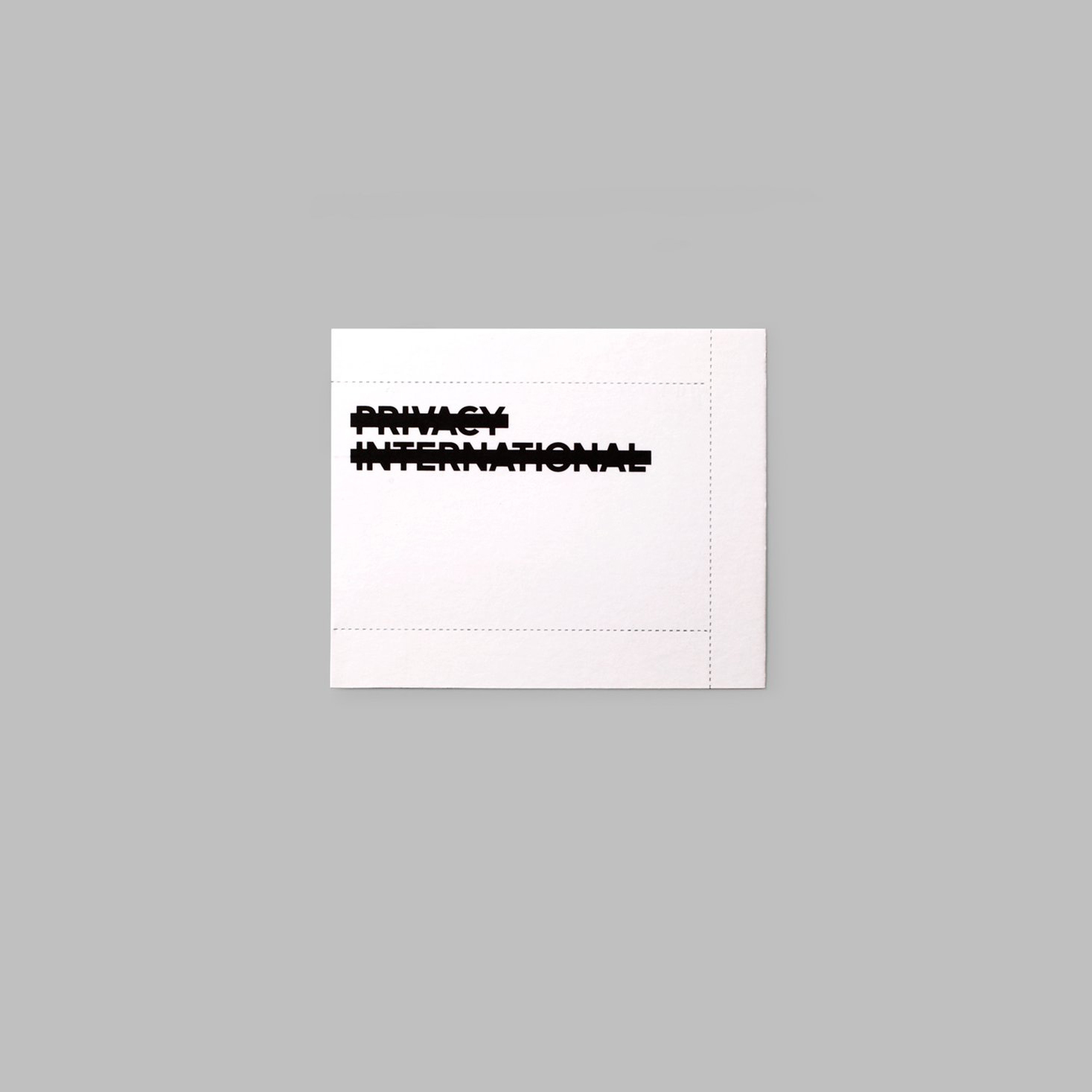
The logo-type’s redacted sans serif construction suitably mixes the themes of censorship and freedom of information with an authoritative quality that has sufficient vertical height in contrast to the strike through to be legible without loosing the impact of the concept. This, in conjunction with a stark black and white colour palette, suitably characterises the divide between open and closed behaviours.
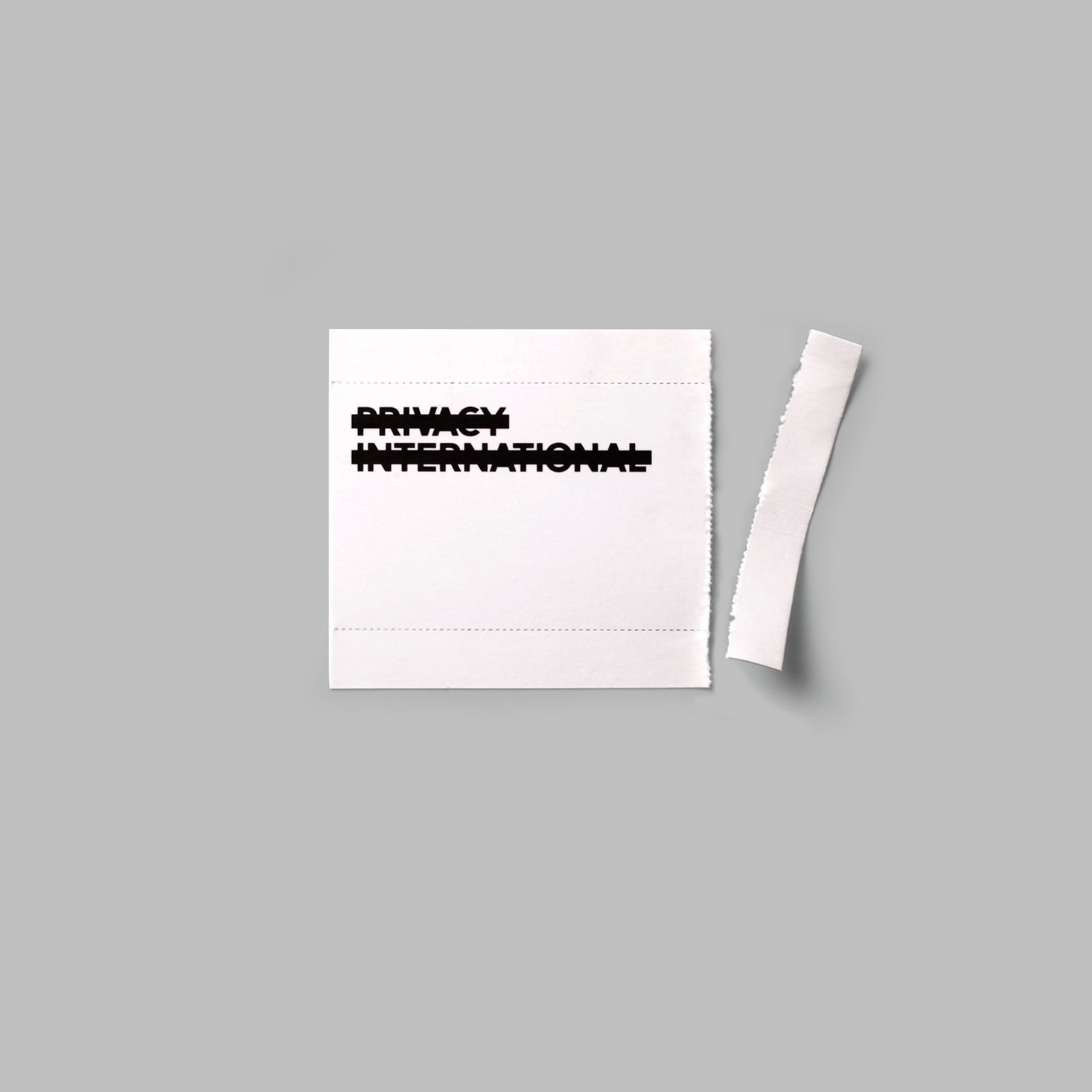
The perforated business cards are original, engaging and appropriately adopt the actions and associated visual cues drawn from secure letters and sensitive personal information received through the post. Inside, the red internal patterns deliver an authenticity through the functionality of covering contact information while giving the organisation further visual assets to work with. The combination of these components reflects the serious nature of the organisation by utilising familiar visual cues that relate global security issues to everyday experiences.
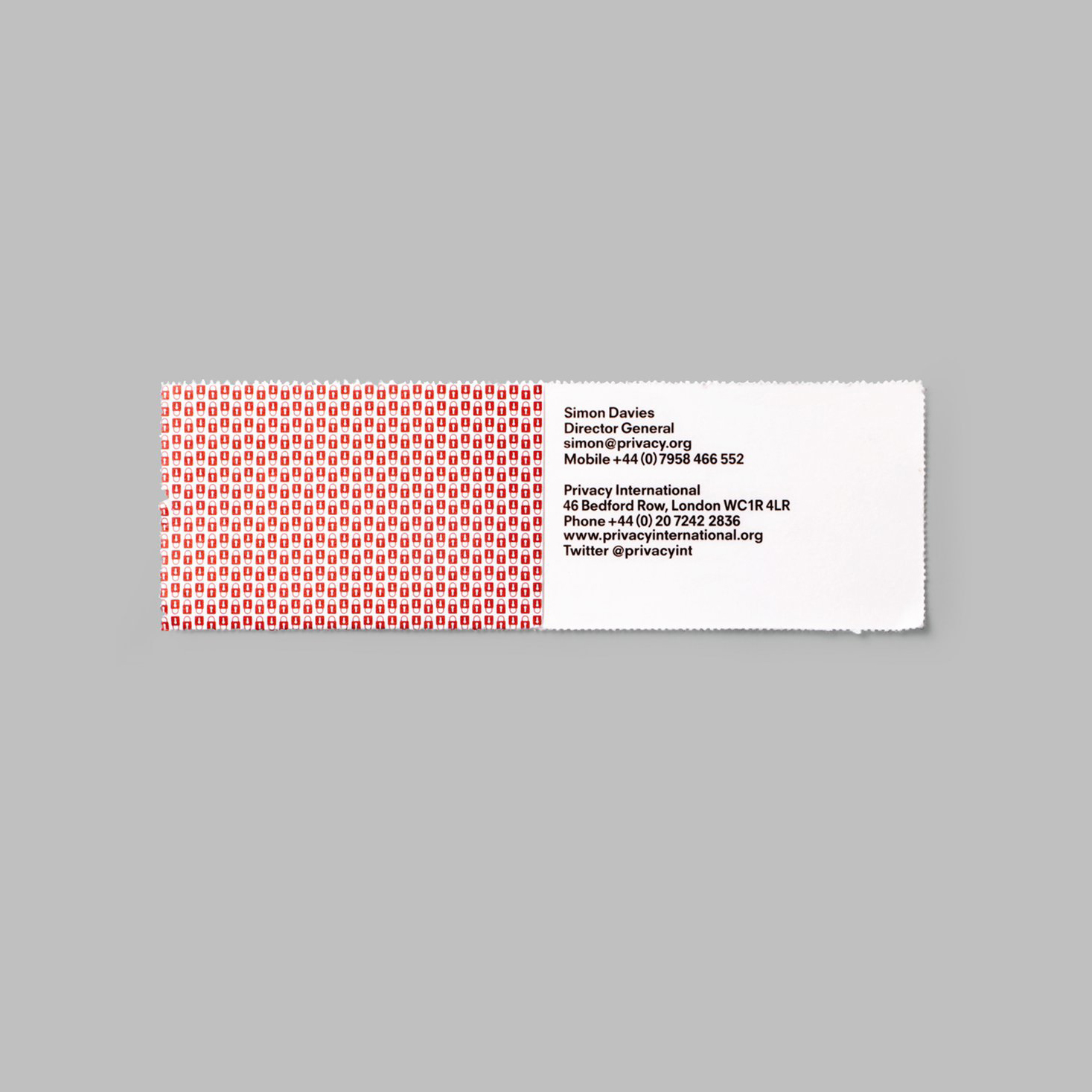
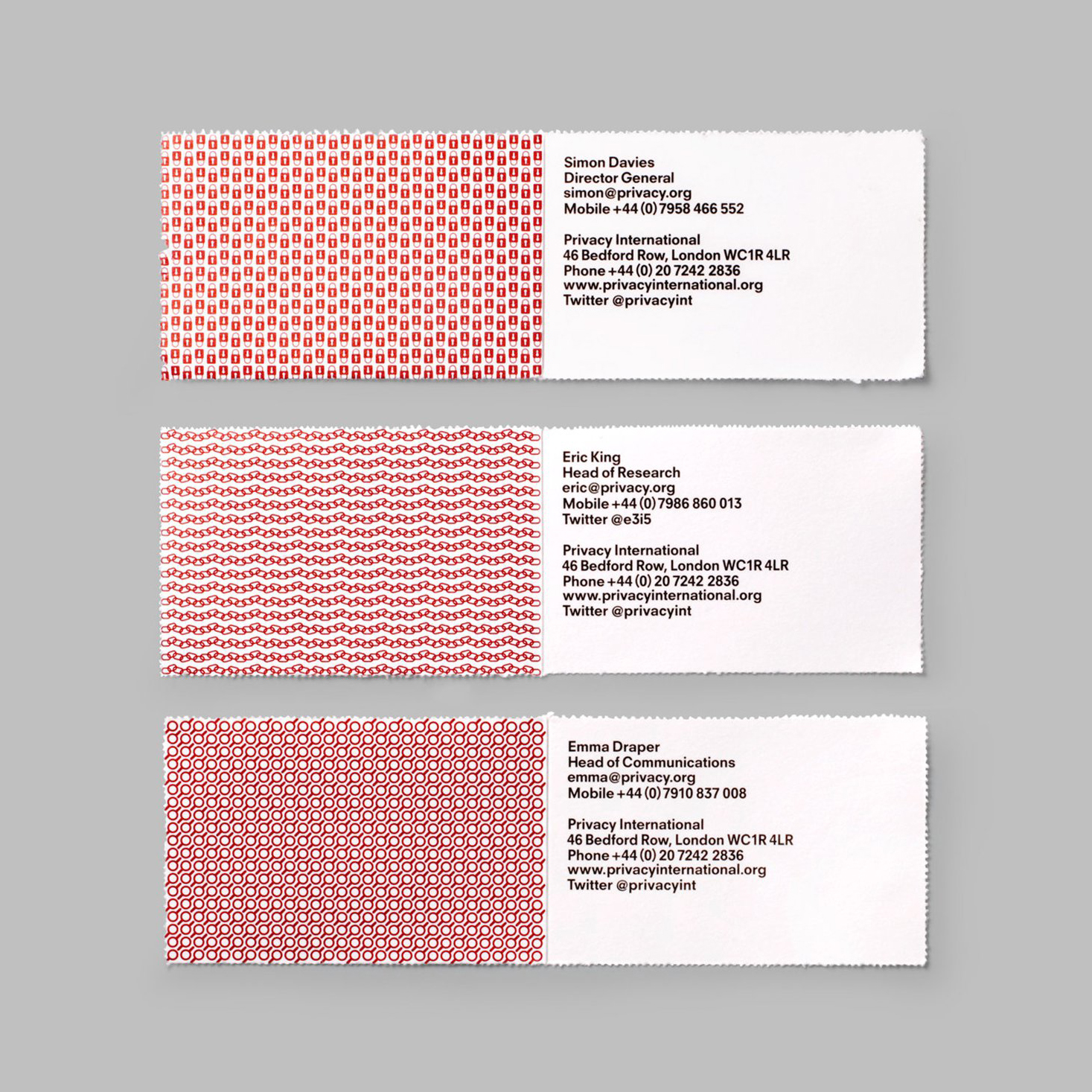
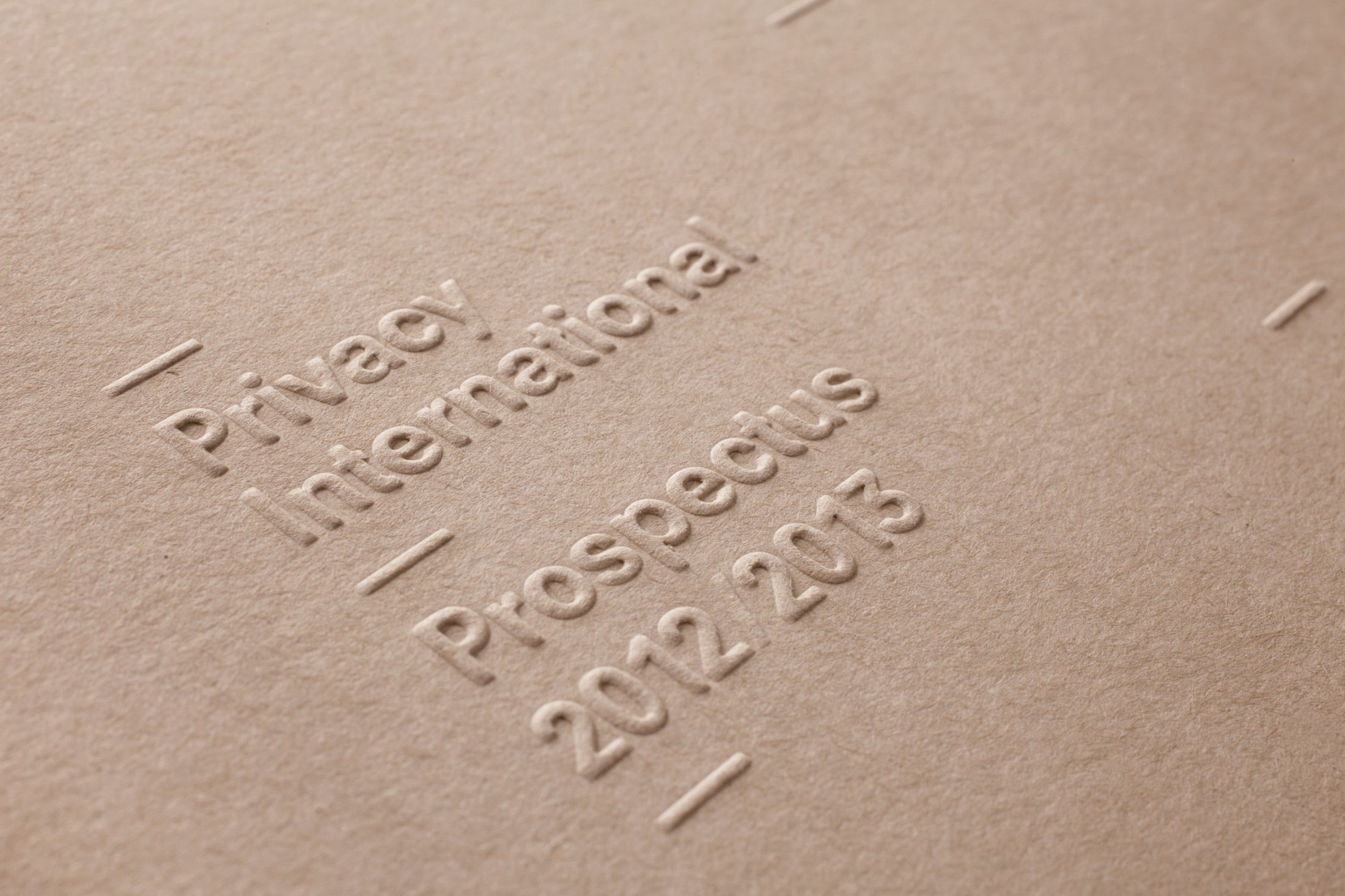

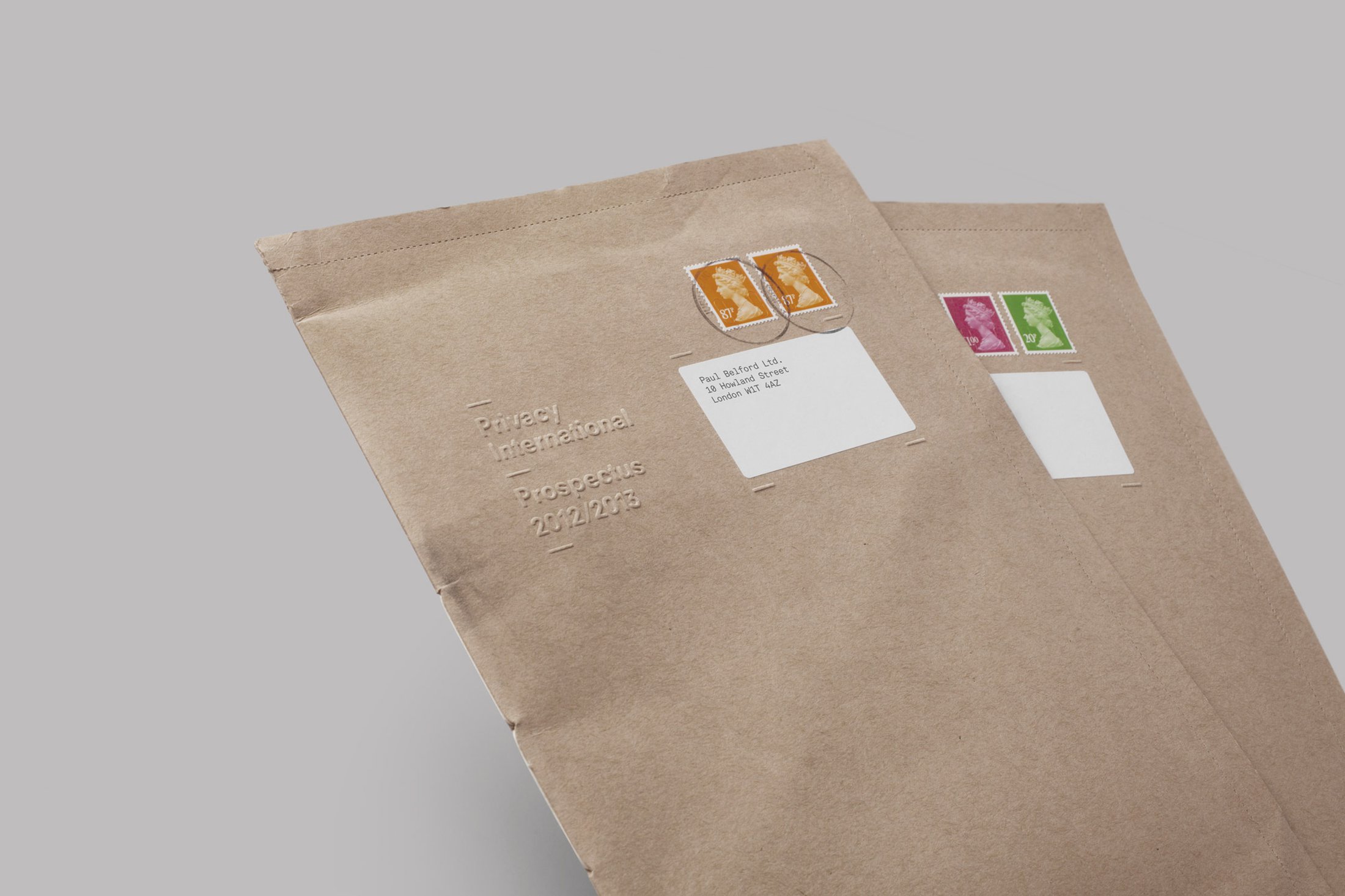
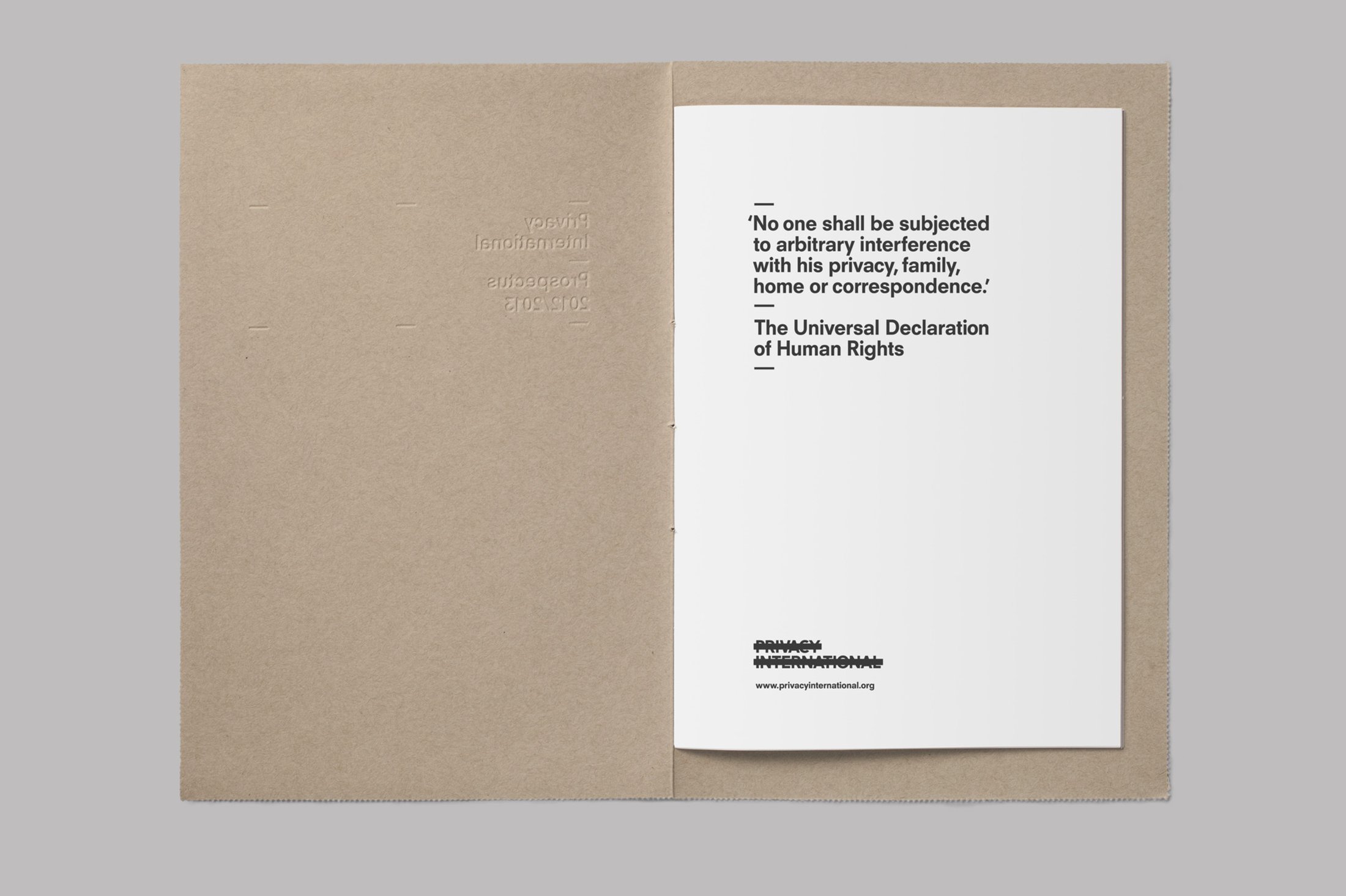
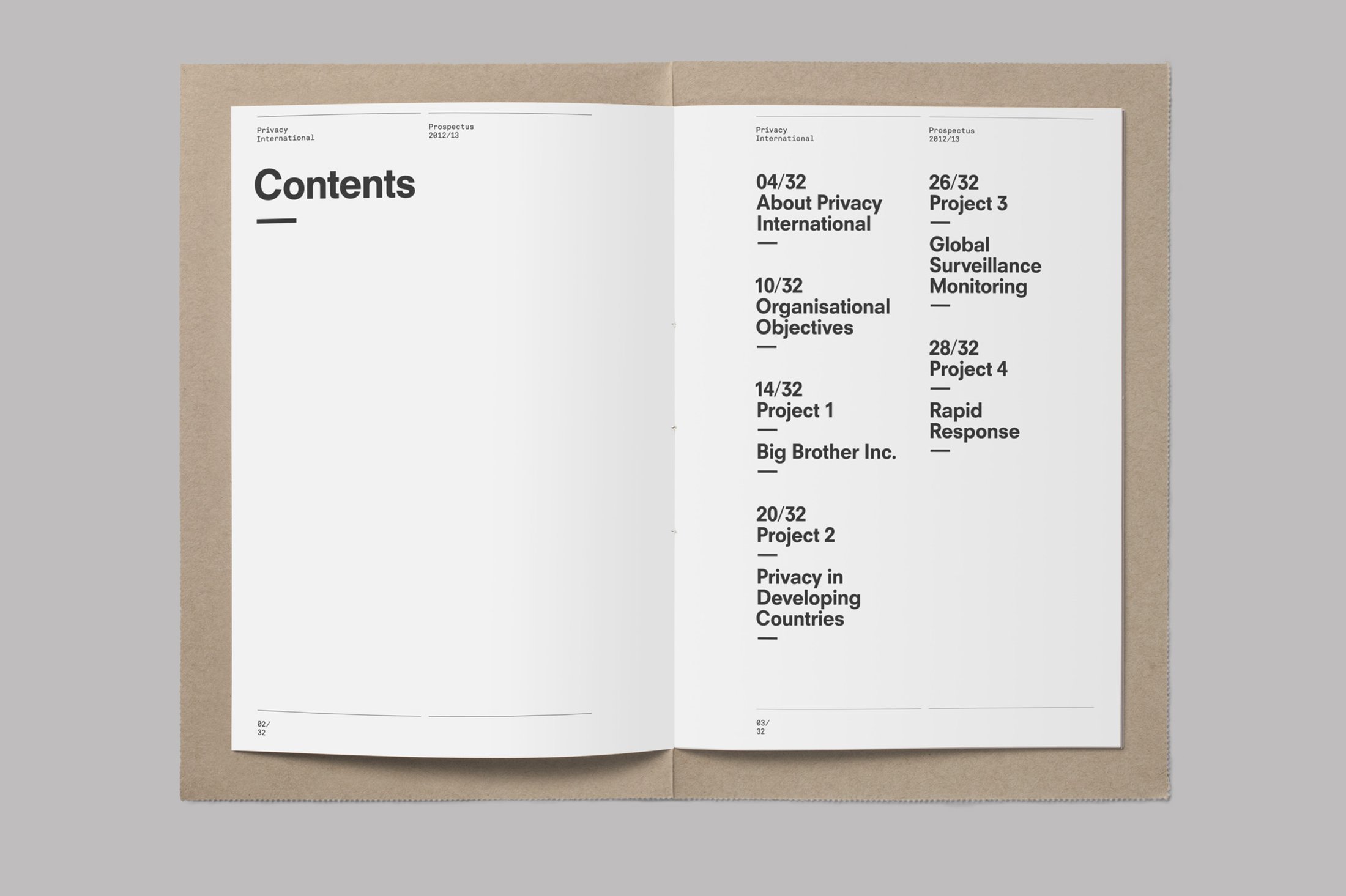
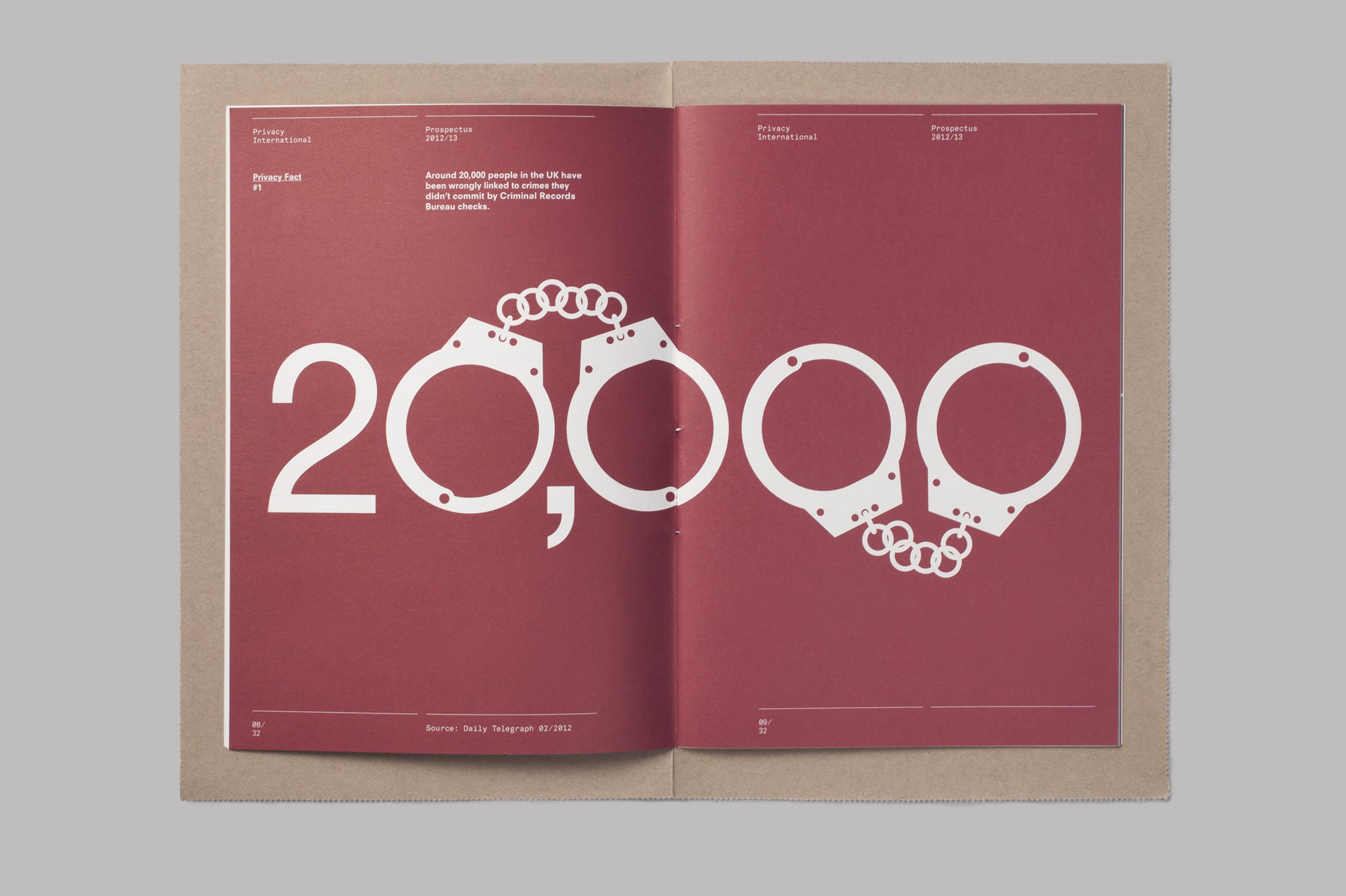
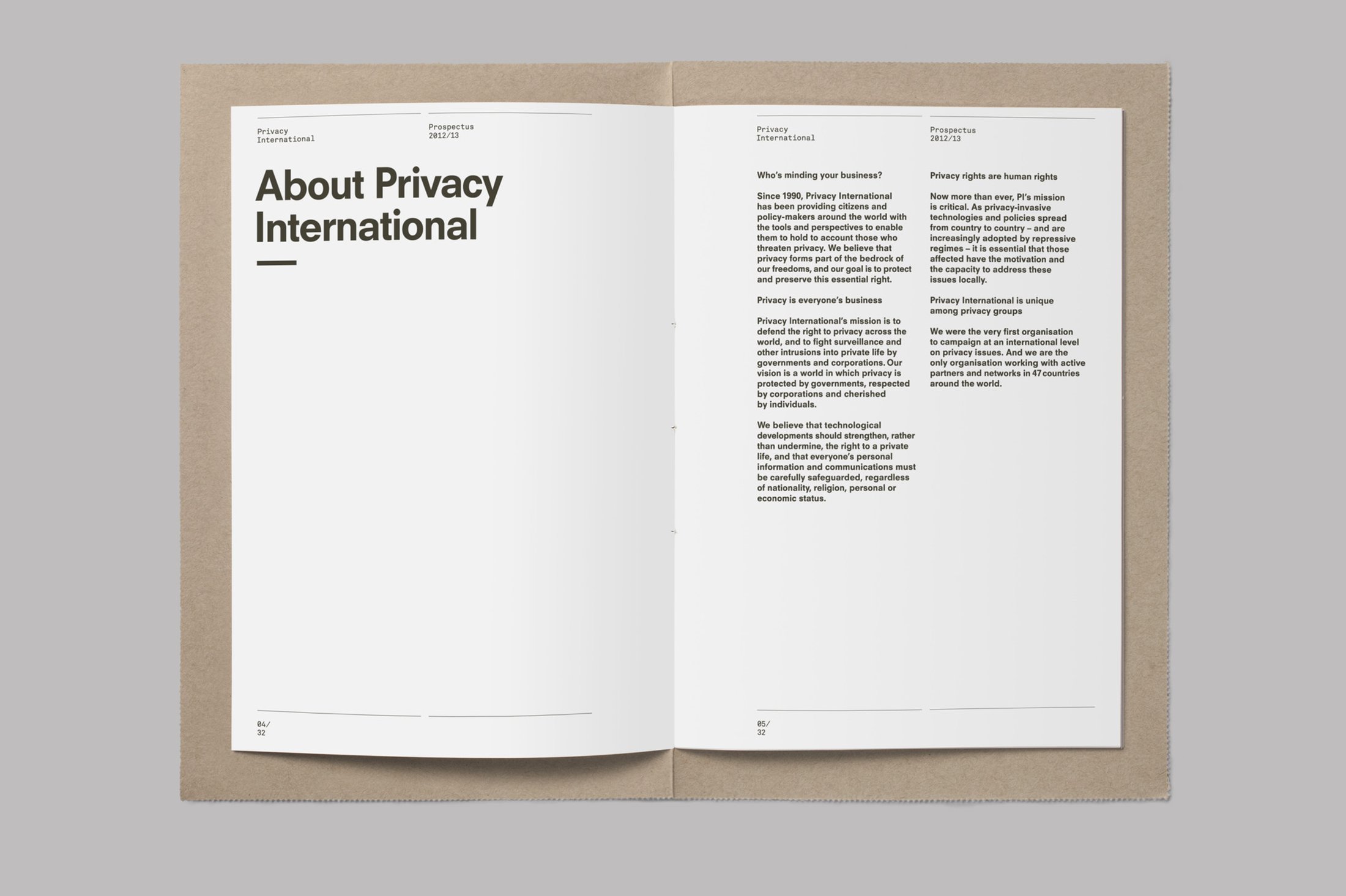
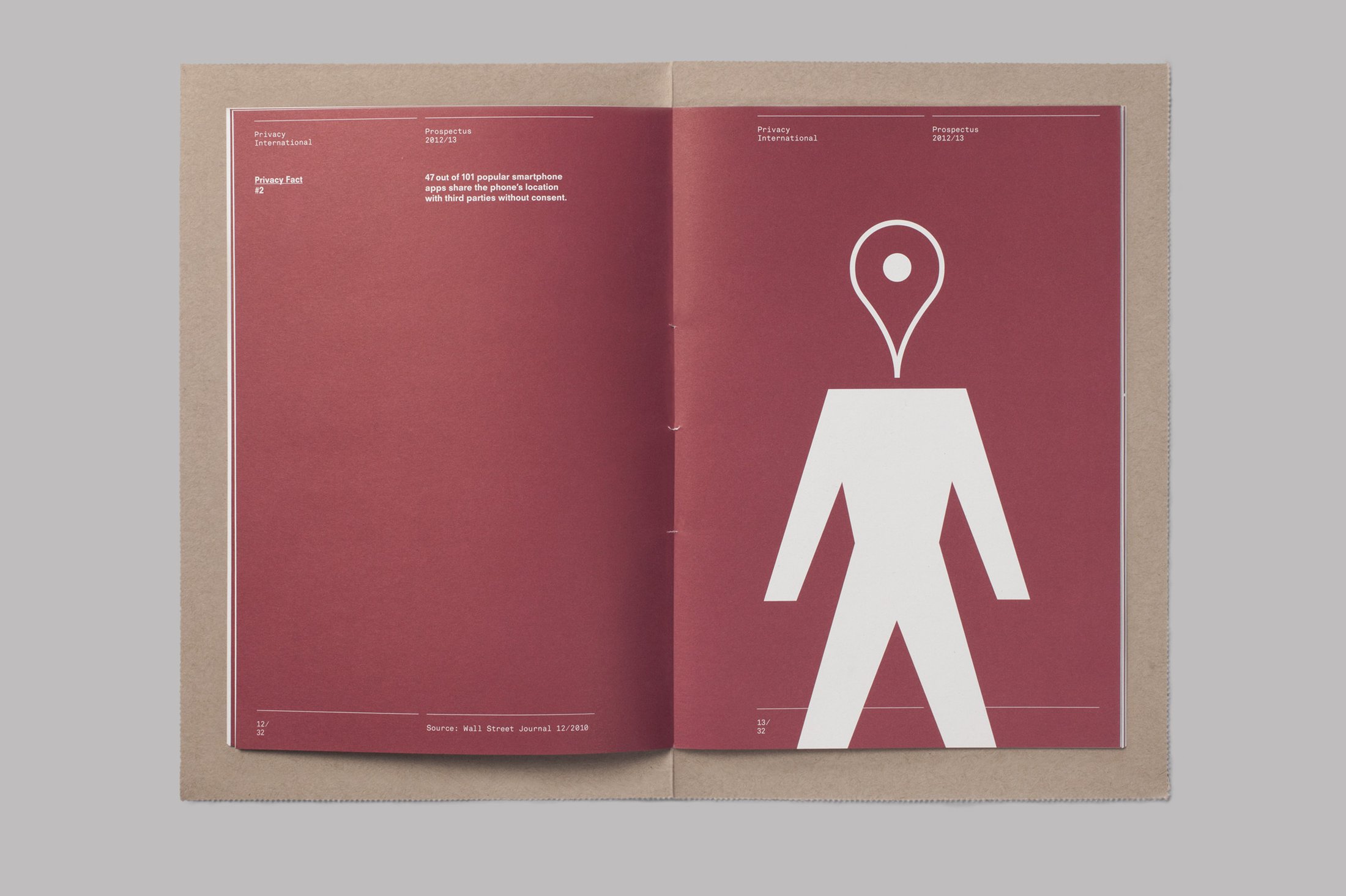
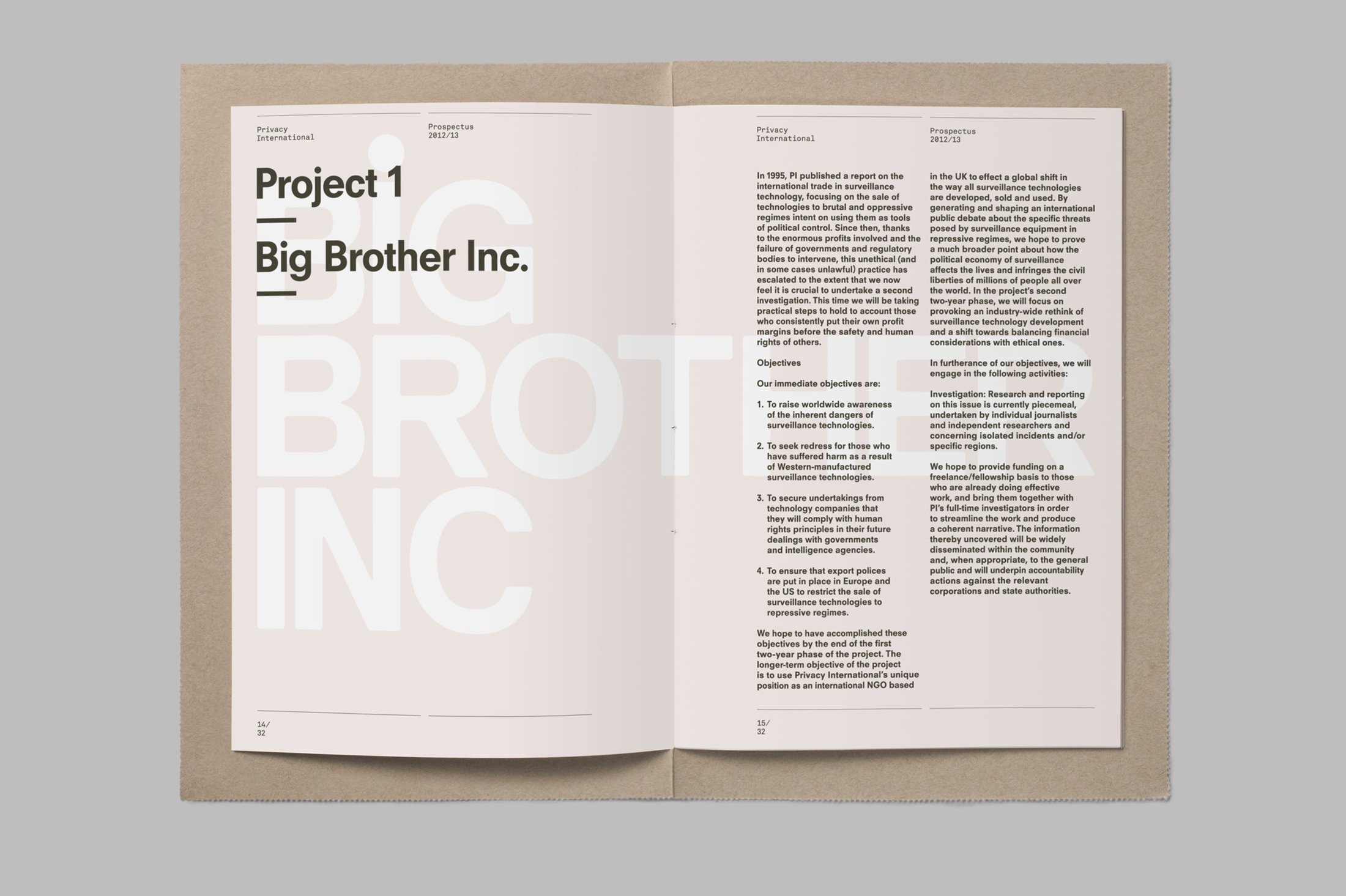
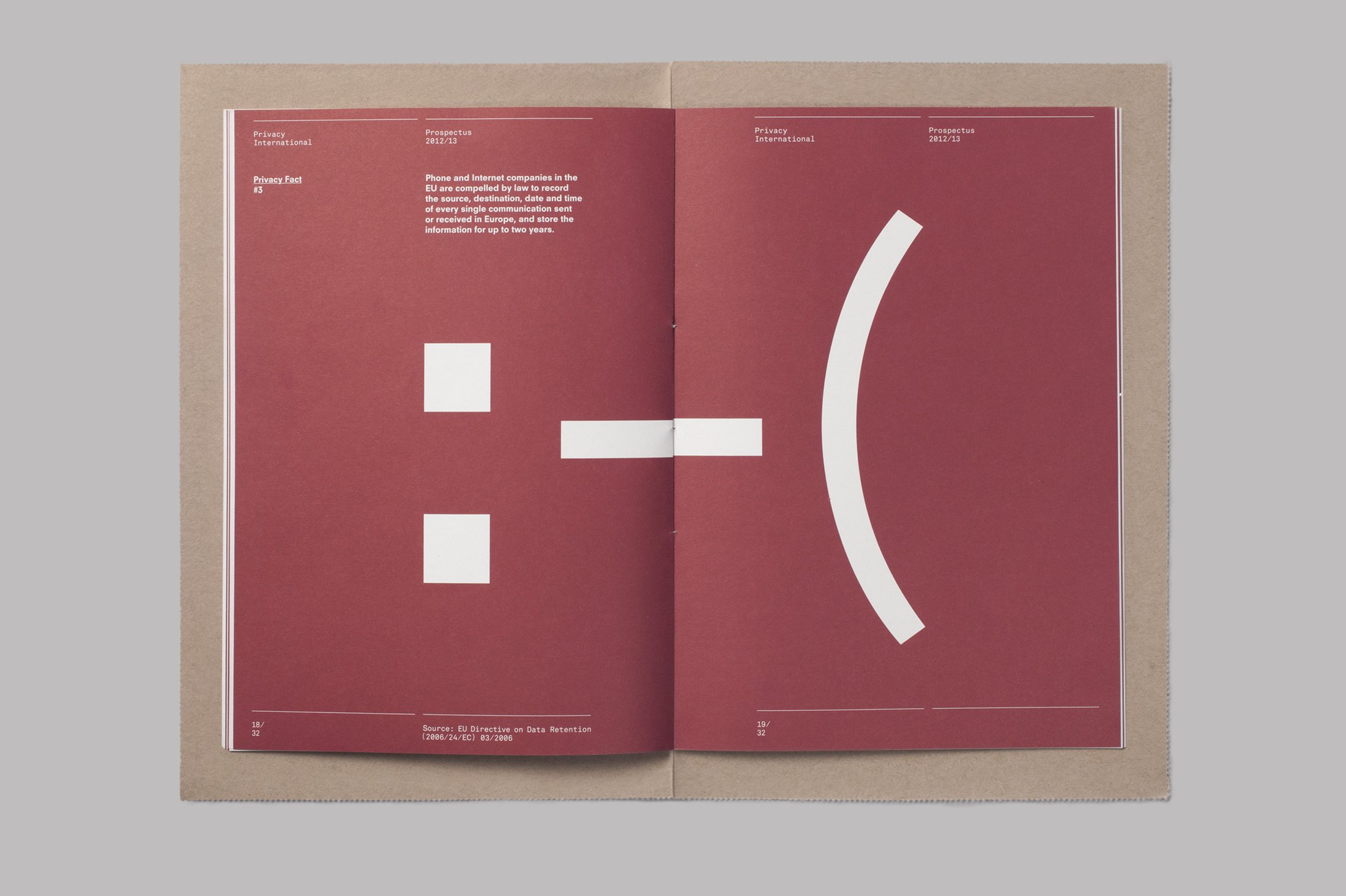
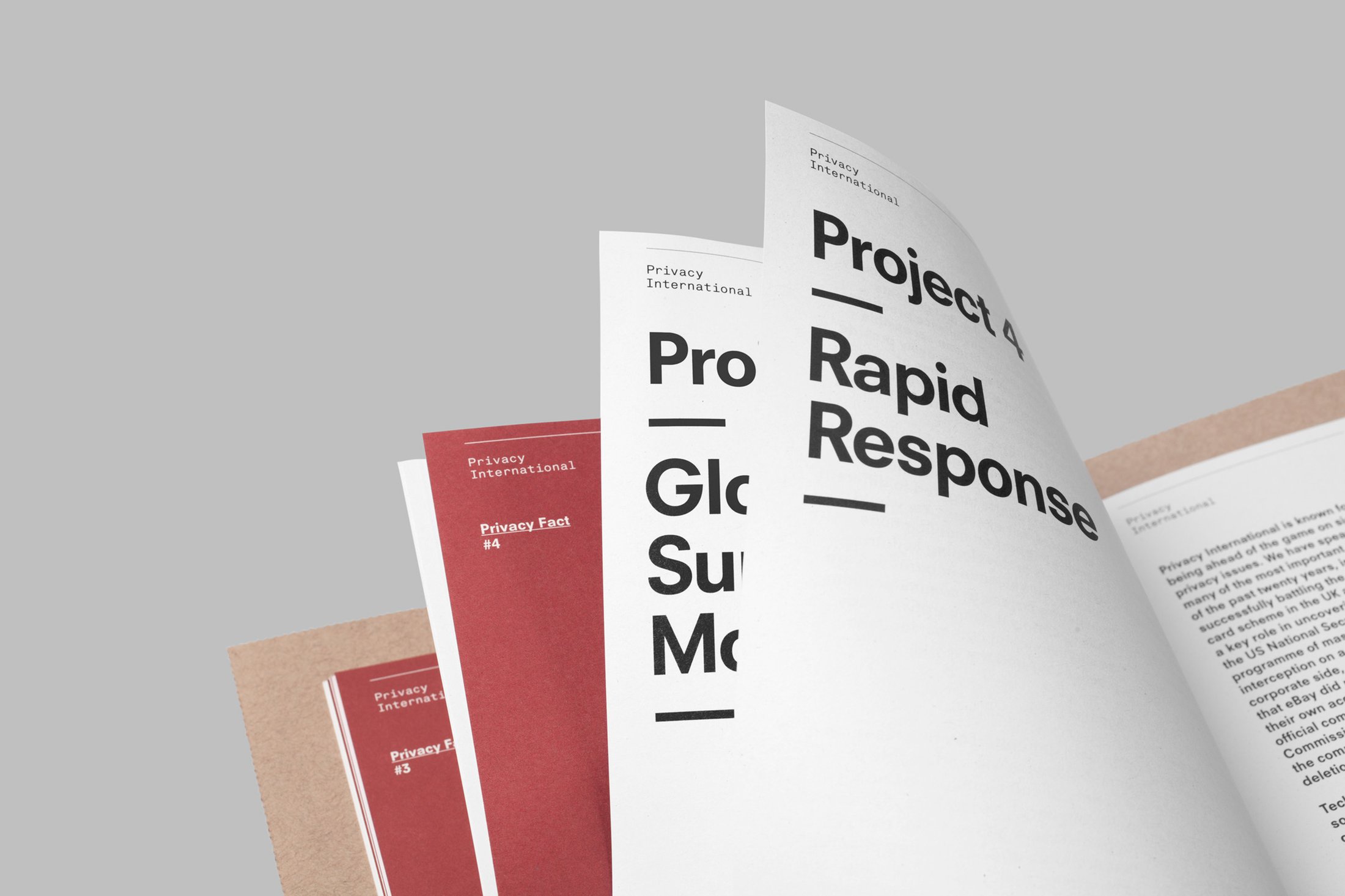
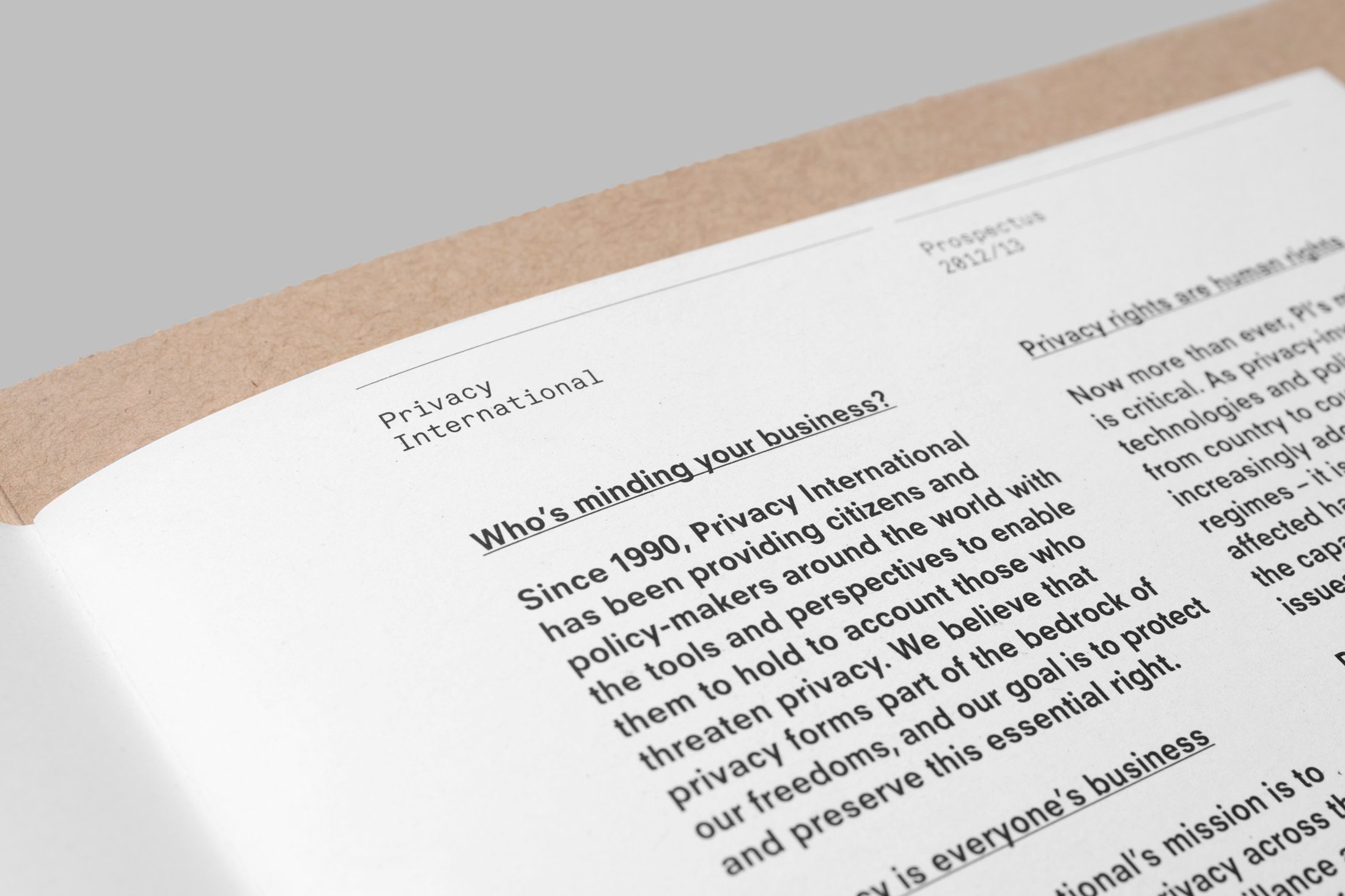
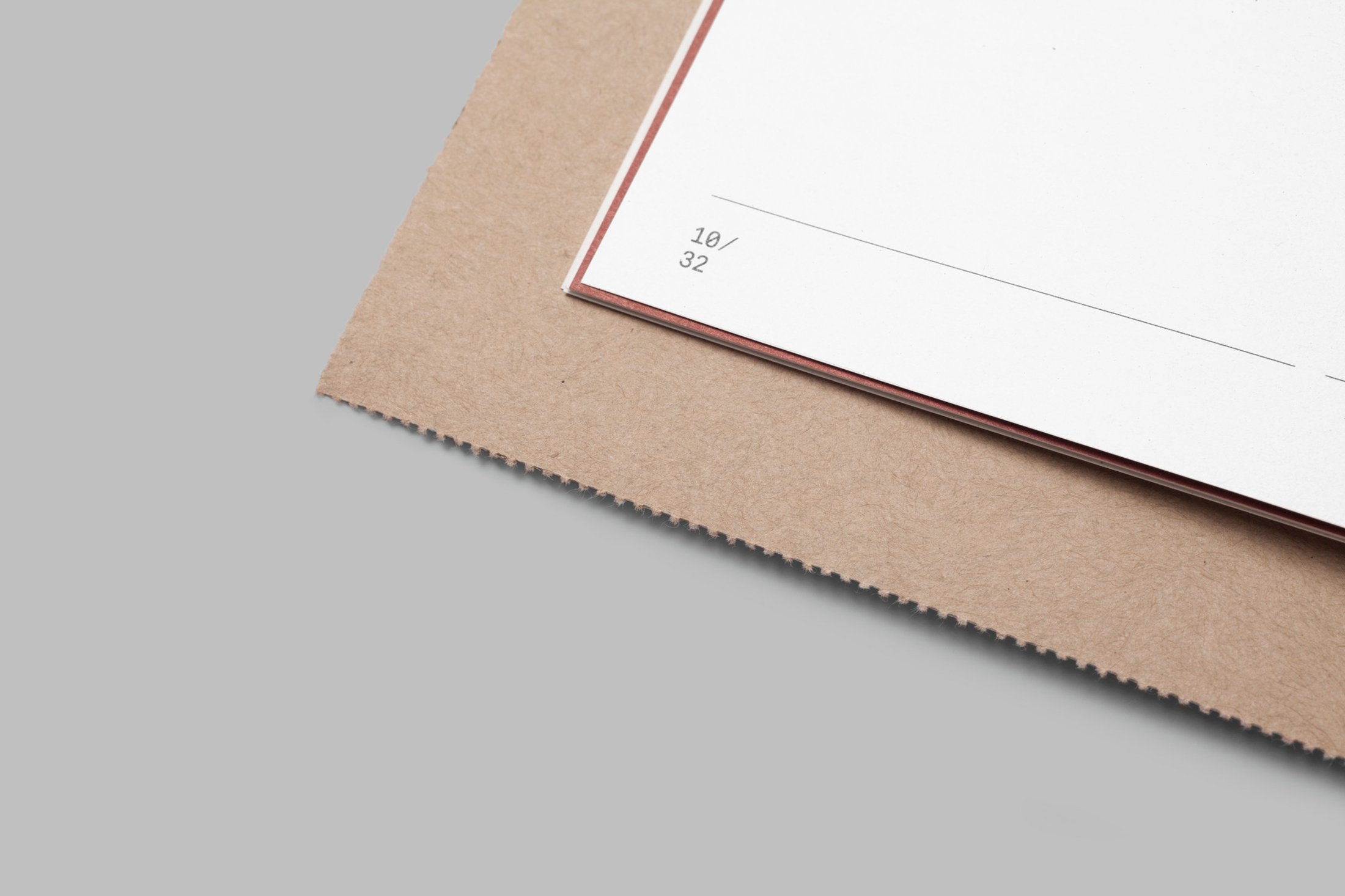
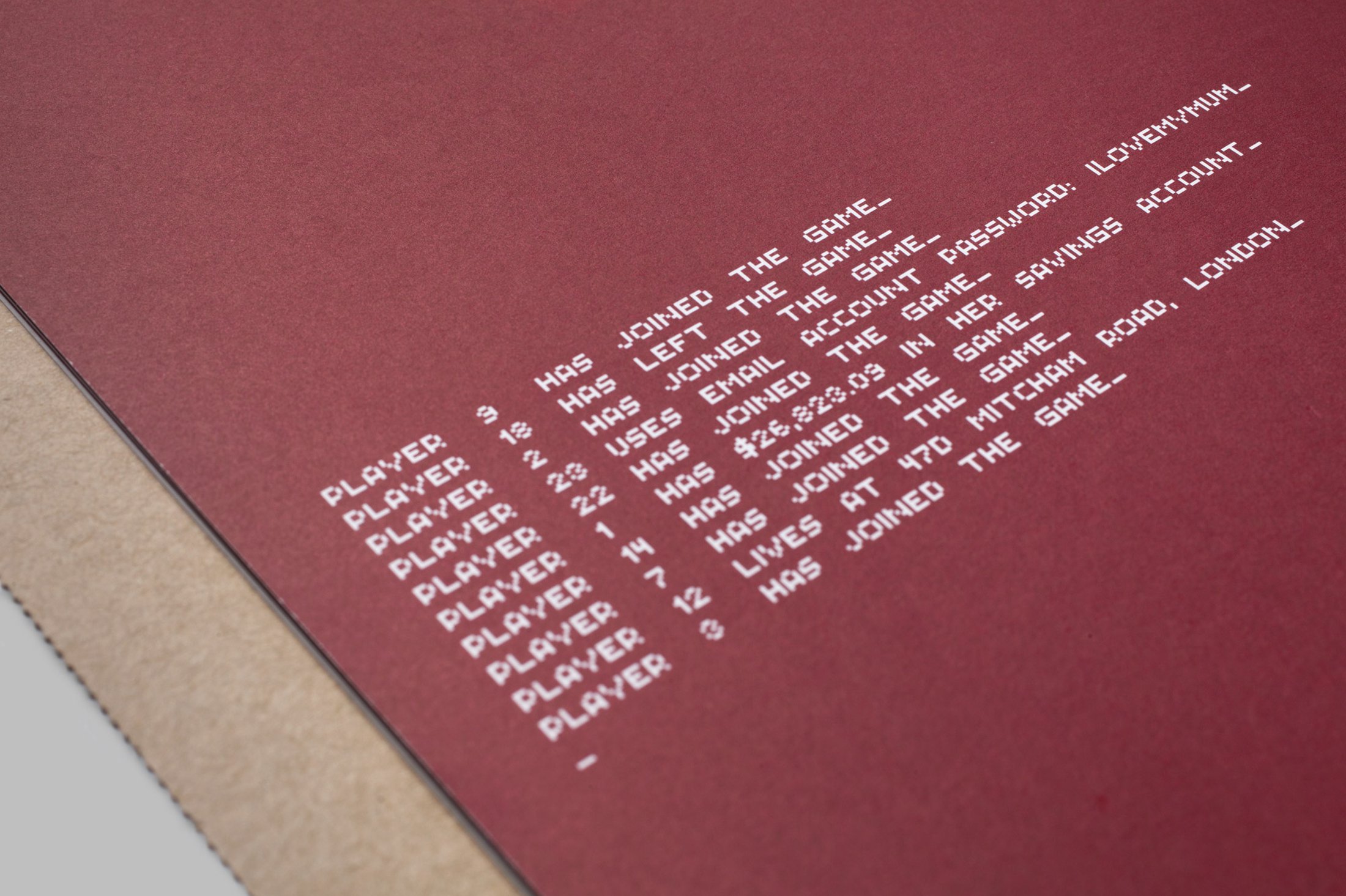
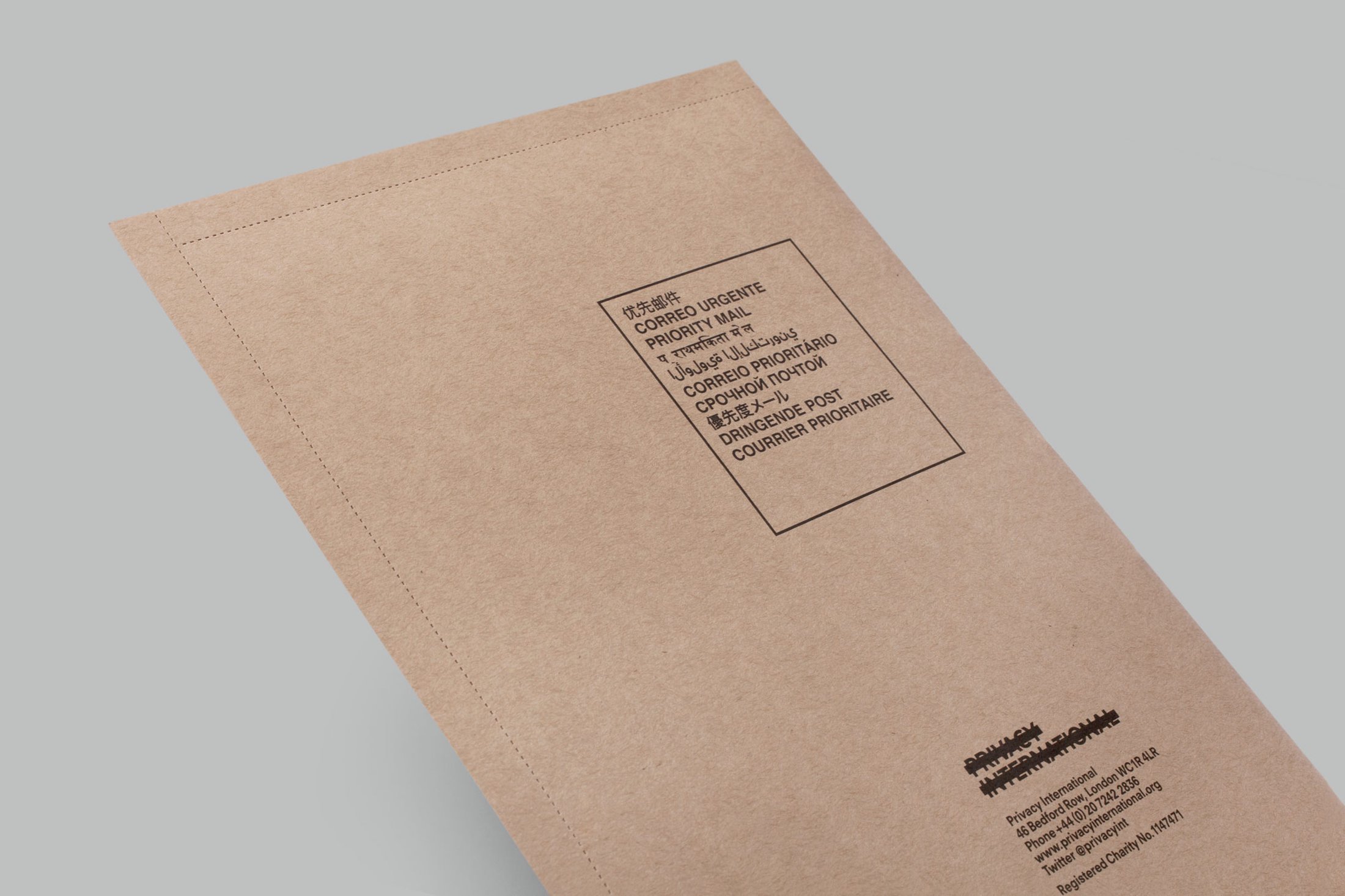
Paul Belford Ltd. build on their visual identity work by continuing to make international privacy concerns relevant to individuals. This time through a business card of webcam stickers that draw attention to the ability governments now have to access home computers. What really stands out is the potential to use the structure and format of the business card to be, not just a surface in which to share contact information, but as an interactive material experience that supports the entire project. This comes through in other aspects of print, such as the envelope cover of the Prospectus document above.
